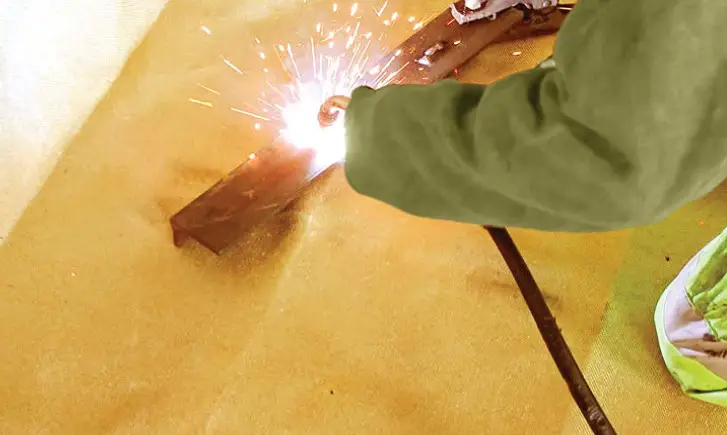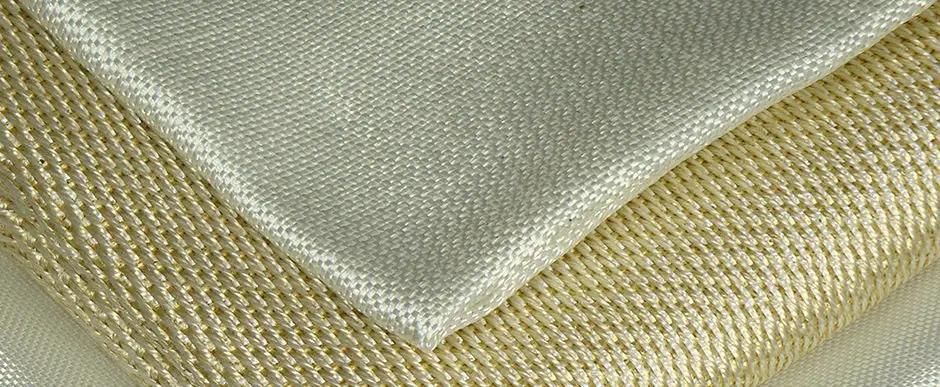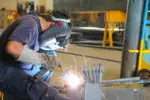Welding blankets are fireproof blankets that can act as a shield, shielding other materials from sparks and spatter from damage. These blankets melt rather than burn.
A molten spatter or a spark might destroy nearby furnishings and inflict serious bodily harm. Therefore, a good welding blanket may protect employees and avoid serious harm. It is critical to safeguard yourself and your surroundings during welding.
Fiberglass is one of the most used types of welding blanket materials. This material is created by filtering molten glass through bushings, which are tiny tube bundles. Apart from fiberglass, there is leather, felt, ceramic and other various types of welding blanket available on the market.
There are various factors to be considered before choosing a welding blanket- like:
-
-
- Welding blanket’s material
- Material- woven or flat
- Density
- Coating substance and thickness
- Coating- single or double sided
- Thickness of the blanket
- Size
- Durability
- Temperature
-
In this article, we will be talking about welding blanket material which is one of the most crucial factors.
Material of welding blankets
The majority of blankets are made of flexible, lightweight, and heat-resistant inorganic fiber materials.
Welding blankets are made from the following materials:
1.) Leather- Leather is gentle on both human skin and sensitive surfaces like wood and painted metal.
However, leather is costly, heavy, and deforms when exposed to welding heat for an extended period of time.
2.) Felt- It is a substance created from carbonised fibers that have been pressed. Felt is resistant to high temperatures of up to 1800°F (1000°C), is skin-friendly, and is inexpensive.
It has strong insulating capabilities. However, felt is not durable.
3.) Fiberglass- It is the most often used material for producing long-lasting and affordable welding blankets. However, fiberglass is toxic to the lungs and causes skin irritation. And that is why, it is coated or has a heat-treated surface for these reasons.
4.) Silica fabric- It has a great resistance to welding and hot-cutting spatter, as well as a high resistance to thermal shrinkage.
It is also good for insulation and is gentle on the skin. However, silica fiber is costly and intended for professional blankets.
5.) Ceramic- It is a tough substance that is ideal for tough industrial welding blankets. Ceramic provides the best protection against heavy splatter and extreme heat. However, ceramic material is costly and hazardous, and it must be handled with caution.
6.) Black slag- For harsher welding applications, black slag is an excellent fabric material. It can withstand molten splatters at temperatures as high as 3000 degrees Fahrenheit. Abrasions are also readily avoided by black slag.
7.) Vermiculite- It can sustain temperatures ranging from 1500 degrees to 2000 degrees Fahrenheit for brief periods of time. This material is best suited for vertical applications because it offers the greatest resistance to heat, sparks, and also grinding.
8.) Acrylic- This material is not as strong as others, yet it is suitable for mild welding. As a result, it may be an excellent option. This material is also fire retardant and may be used as a barrier during welding.
Coatings
Coatings provide additional heat and splatter resistance, as well as specific resistance to water, oils, acids, electricity, and skin irritation. However, coating is not possible with some blanket materials, such as felt.
Many coating materials can be employed depending on the service circumstances of the blanket. Popular coatings include:
1.) Silicone– Silicone-coated fiberglass is the material to seek for if you need an oil-resistant welding blanket. It can withstand 500 degrees Fahrenheit, while the basic cloth promises to be resistant to temperatures as high as 1000 degrees Fahrenheit.
2.) Neoprene- It’s a durable form of fiberglass that provides endurance against high temperatures. With its abrasion-resistant property, it acts as a heat shield for coating within a temperature of 300 F and for base fabric within 1000 F.
3.) Acrylic- Acrylic coated fiberglass is a must-have material for a welding blanket if you need abrasion resistance. It can endure temperatures of up to 1000 degrees Fahrenheit.
4.) Heat-treated uncoated fiberglass- Withstanding a temperature of 1000 F, this fiberglass is ideal for your welding application if its intensity ranges from light to medium. Its usage is for vertical planes.
Since welding is a hazardous profession, a high level of safety and protection by complying with ISO 9185 (splashes of large amounts of molten metal) and EN ISO 11611 (during welding and related methods) should be taken into consideration.
What to think about when selecting welding blanket material?
1.) Flame retardant materials– You should search for a welding blanket with strong flame retardant characteristics.
Many brands will offer heat resistance and flame retardancy. However, not every one of them follows through on their claims. There are some welding blankets that are not heat resistant and may develop char marks or even burn holes.
2.) Size- There is no hard and fast rule for selecting the proper size. It all depends on how at ease you are with a particular size of welding blanket.
However, for industrial operations, you’ll require a large-sized welding blanket as they are great for protecting and covering the whole surface. The blanket should be large enough to completely cover your work area.
3.) Durability- Durability is very important. Make sure the welding blanket is long-lasting and won’t need to be replaced after two or three uses.
Inquire about the material used in a welding blanket to obtain a sense of its quality. Also, be aware of the maximum temperature it can endure.
4.) The thickness- The level of thickness corresponds to the level of protection desired. It is also affected by the welding process. The thicker the welding blanket, the more dependable it is.
Always go for proper thickness so that you may reuse it.
5.) Comfort- Fiberglass, for example, has a rougher feel because it hardens quickly. Although it might be soft enough to be used as a cloth, it can yet have a gritty feel to it. So if it is comfort that you are looking for, leather material should be your choice.
FAQs-
Are welding blankets fire resistant or fire proof?
When you claim something is fireproof, it suggests it can survive fire or extreme heat. If we accept this definition, then welding blankets are fireproof, but they also have temperature resistance limits that vary according to the substance they’re constructed of.
What exactly is the distinction between a welding blanket and a fire blanket?
A welding blanket is thicker, heavier, more adaptable, and lasts longer than a fire blanket, but it is more costly. In addition, you may use a welding blanket as a fire blanket to cut off a fire’s oxygen supply or to cover oneself in the event of a fire.
A fire blanket is a single-use light welding blanket that may be used to extinguish a small fire or to cover oneself and escape from a fire.
The extreme temperatures of welding spatter cannot be resisted by a fire blanket. Not to mention oxy-fuel or plasma cutting splatter.
Which welding blanket material is the best?
When it comes to choosing among all the materials of a welding blanket, fiberglass is the first choice. It is one of the most used types of welding blanket materials.
This material is created by filtering molten glass through bushings, which are tiny tube bundles. When the glass cools, it becomes flexible enough to be utilized as fiber.
Fiberglass is more resistant to high temperatures when it is not combined with other materials or is formed of minerals. This technique causes it to acquire properties that make it considerably more heat resistant.
Properties of fiberglass that makes it an excellent choice for welding blanket material-
1.) Tensile strength is very high. At the same diameter and weight, glass has stronger tensile strength than steel wire.
2.) Heat resistance is excellent. Glass textiles retain 50% of their room temperature tensile strength at 370°C, 25% at 480°C, an 845°C softening point, and a melting point of 1,135°C.
3.) Excellent fire resistance. Because glass fiber is a mineral, it is naturally incombustible. It neither supports nor propagates a flame. When exposed to heat, it does not produce smoke or hazardous byproducts.
4.) Great chemical resistance. Glass fiber is very resistant to most chemical attacks.
5.) Outstanding durability. Glass fiber is resistant to sunlight, fungus, and germs.
6.) Extremely cost-effective. When compared to equivalent materials, it is a more cost-effective option.
Conclusion
As mentioned above, fiberglass is the safest option for a welding blanket material. However, you should be aware of the significance of analyzing the advantages and downsides of each material.
Instead of choosing the cheapest welding blanket, aim for one with high-quality finishing, the proper material, and a certain level of heat resistance.








